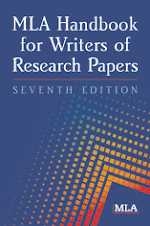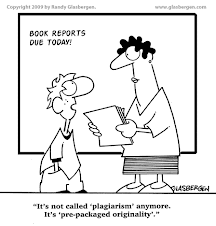This blogsite will present an expansion of the Sources (Citations) and Note-taking steps found on The Research Process home site. You might visit there first for a brief contextual background, paying attention to the downloadable instructional materials.
Citing sources and note-taking is predicated on the student having a topic, dividing that topic into manageable and accessible subtopics, locating a variety of physically and intellectually available sources of information and citing them correctly, then learning good research reading strategies. At this point, the student is ready to learn effective note-taking skills and strategies, covered in this presentation as time allows.

Sources and Citations
"A good source supports the topic and subtopics and is available and readable based on the student's assessed (dis)abilities."
- Sources: Anything and everything used for information including text, ideas, and images.
- Format: A minimum of three different kinds of sources should be used including a variety of print and nonprint materials.
- Primary and secondary sources should be considered according to topic and student age/ability.
- Citing sources through a style such as MLA is essential to prevent plagiarism.
- Teaching Copyright and Fair Use of sources is essential.
- Learning to evaluate sources prepares students with lifelong skills: Internet sources and print sources.
Grades 4-8 PowerPoint, Grades 9-14 PowerPoint.
Download lesson plan and instructional forms:
lesson plan, MLA 7th edition citation forms for book, encyclopedia, and Web site (newest!), and a Works Cited sample.
Note-Taking
"A good note creates information ownership. This is learning!"
- Pre-sort notes by using subtopics as titles on note cards, notebook paper notes, or specially designed note sheets.
- Legitimate note-taking can include copying keywords, phrases and facts, with proper credit. This is good for young and novice researchers.
- Paraphrasing and summarizing are more difficult and must be taught and practiced. This is good for older and experienced researchers.
- Quotation marks and endnotes/footnotes (not MLA 7th edition!) are essential for copying sentences and passages.
Grades 4-8 PowerPoint, Grades 9-14 PowerPoint.
Download lesson plan instructional forms for note-taking:
lesson plan, note-taking exercise, and Cornell-style note sheet. For index cards, apply the labeling method seen in this sample note card. For a briefer unit, perhaps use this adapted Frayer model note sheet.
Now for some practical application
1. WHAT: Let's practice what is good note-taking with a sample exercise.
2. WHO: Practice planning for a research unit to see how a note-taking lesson is agreed upon by the teacher librarian and collaborating teacher. At what stage are you?
3. WHEN: Visit some sample research units to see that a key role of the teacher librarian is deciding when a particular note-taking tool is best for students. Based on age and research experience, will you use generic materials such as note cards, a Cornell-style form, a Frayer Model form, or a general elementary form.
4. HOW: Let's visit some units to see how special note sheets are adapted to the unit:
a. Science unit with notetaking cladograms.
b. Science unit with chart notes
c. Language Arts unit with specially designed notes sheets.
d. History unit with crossword puzzle notes, clues, and solution.
e. History unit with timeline notes.




No comments:
Post a Comment